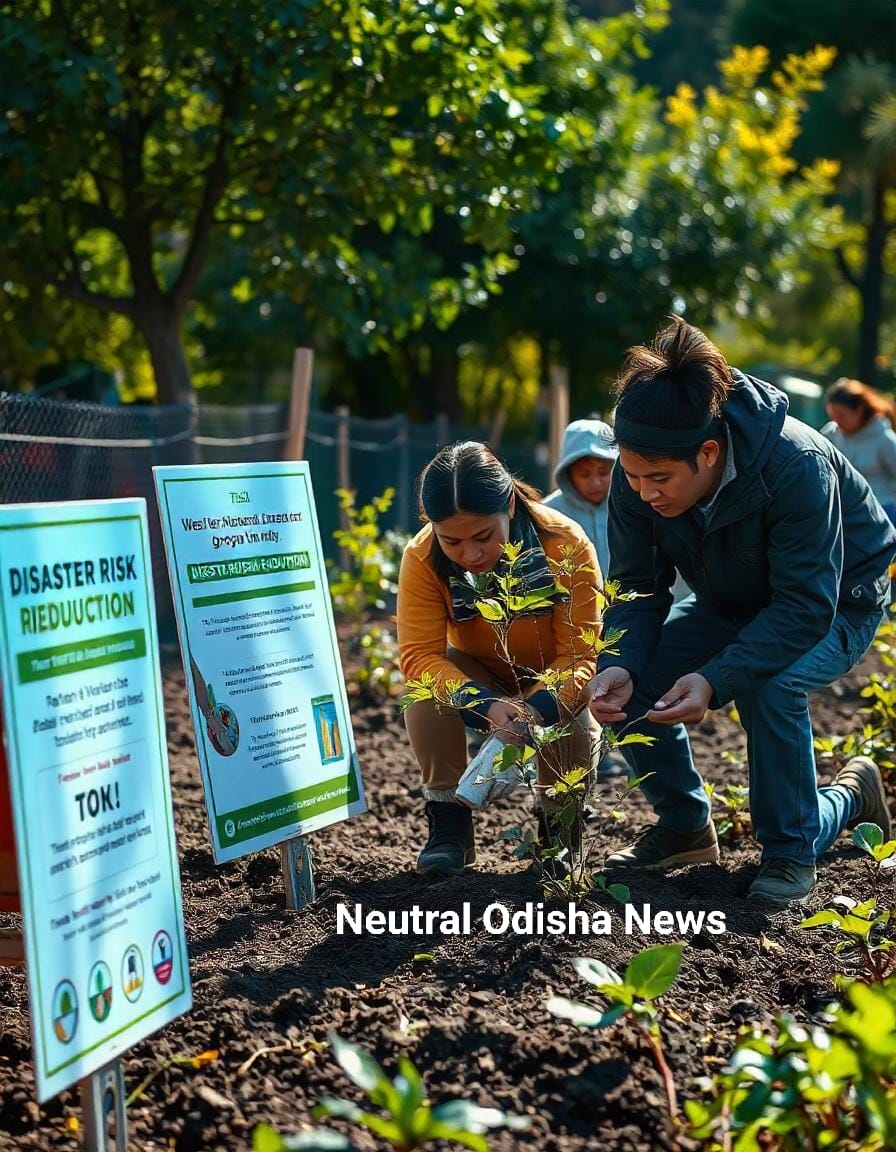Disaster Risk Reduction (DRR) refers to the systematic approach to identifying, assessing, and reducing the risks of disaster. It aims to minimize vulnerabilities and disaster risks throughout a society, to avoid (prevention) or to limit (mitigation and preparedness) the adverse impacts of hazards, within the broad context of sustainable development. DRR encompasses a wide range of activities and measures, from creating early warning systems to building disaster-resilient infrastructure, and promoting awareness about disaster risk among communities and governments.
We are happy to share that one of our colleagues was selected for the Shimanami Collective: Women’s Leadership in Tsunami-based Disaster Risk Reduction (DRR) Training Program by UNITAR. This prestigious initiative, which had been exclusive to women since its inception, allowed participation from all genders for the first time, making this selection a moment of great pride.
This program brought together global experts, policymakers, and community leaders to discuss and implement resilience strategies for disaster-prone regions. With Odisha being one of the most cyclone-affected states in India, our colleague developed a Cyclone DRR Plan, emphasizing three key levels of action:
1. Individual Preparedness – Promoting early warning awareness, emergency kits, and evacuation drills.
2. Community-Based Actions – Strengthening local shelters, training first responders, and ensuring efficient resource distribution.
3. Professional & Institutional Readiness – Advocating for improved disaster policies, resilient infrastructure, and coordination between government agencies and NGOs.
The experience at UNITAR reaffirmed the need for proactive disaster mitigation rather than reactive relief efforts. As climate change accelerates, such global knowledge-sharing platforms empower regions like Odisha to build resilience through education, collaboration, and strategic planning.
By integrating these insights, Neutral Odisha News remains committed to spreading awareness and advocating for stronger DRR frameworks that protect lives, livelihoods, and ecosystems.
Detailed Disaster Risk Reduction(DRR) PLAN for CYCLONE preparation

The Importance of Disaster Risk Reduction
Natural and man-made disasters have far-reaching impacts, including the loss of lives, economic losses, and social disruption. Disasters can severely set back development gains, especially in vulnerable areas where poverty and inequality are already prevalent.
DRR aims to:
1. Protect Lives and Livelihoods: By minimizing the damage caused by disasters, DRR saves lives and reduces the economic toll on communities and nations.
2. Build Resilience: It strengthens the capacity of communities to withstand and recover from disasters, thereby reducing future vulnerability.
3. Promote Sustainable Development: DRR is closely linked to sustainable development goals, as disasters can undo years of development progress. Integrating DRR into development planning ensures long-term benefits.
Evolution of Global Frameworks for Disaster Risk Reduction
The global community has long recognized the importance of DRR, with various frameworks guiding international efforts to manage disaster risk. Key milestones include:
• The Yokohama Strategy (1994): Focused on disaster preparedness and the importance of building resilient communities.
• The Hyogo Framework for Action (2005-2015): Provided a comprehensive approach to reducing disaster losses by focusing on risk assessment, governance, preparedness, and recovery.
The Sendai Framework for Disaster Risk Reduction (2015-2030)
The Sendai Framework for Disaster Risk Reduction was adopted in March 2015 during the Third United Nations World Conference on Disaster Risk Reduction held in Sendai, Japan. It is a 15-year, voluntary, non-binding agreement that recognizes that the State has the primary role in reducing disaster risk but that responsibility should be shared with other stakeholders, including local governments, the private sector, and civil society.
Key Priorities of the Sendai Framework
The Sendai Framework outlines four priorities for action:
1. Understanding Disaster Risk: Knowledge about disaster risks is crucial for DRR efforts. The framework emphasizes the importance of scientific research, data collection, and risk assessments to better understand the root causes of disaster risks.
2. Strengthening Disaster Risk Governance: Governments and institutions must develop strong policies, laws, and regulations that integrate DRR into every sector. This priority aims at enhancing cooperation between all stakeholders at the national and local levels.
3. Investing in Disaster Risk Reduction for Resilience: This priority highlights the need for investing in preventive measures, such as building disaster-resilient infrastructure, creating effective early warning systems, and promoting sustainable land-use planning.
4. Enhancing Disaster Preparedness for Effective Response: It stresses the importance of preparedness, early action, and post-disaster recovery to “Build Back Better” after disasters. Strengthening capacities for recovery and reconstruction is crucial for reducing future risks.

Global Targets
The Sendai Framework sets seven global targets to be achieved by 2030, including:
1. Substantially reduce global disaster mortality.
2. Substantially reduce the number of affected people globally.
3. Reduce direct disaster economic losses in relation to global GDP.
4. Reduce damage to critical infrastructure and disruption of basic services.
5. Increase the number of countries with national and local DRR strategies.
6. Enhance international cooperation for developing countries.
7. Increase the availability of and access to multi-hazard early warning systems.
Achievements and Challenges in Implementing the Sendai Framework
Since its adoption, the Sendai Framework has made significant progress:
• Many countries have developed or improved their national DRR strategies.
• There is better cooperation and data-sharing on disaster risks, leading to improved early warning systems.
• Global awareness of DRR has increased, with more focus on resilience building at the community level.
However, challenges remain:
• Resource Constraints: Many developing countries face financial and technical constraints in implementing DRR strategies.
• Climate Change: The growing frequency and intensity of climate-related disasters pose new challenges to DRR.
• Data Gaps: In many regions, particularly in low-income countries, there is a lack of reliable data for risk assessment and decision-making.
Role of Technology in Disaster Risk Reduction
Technology plays a pivotal role in achieving the goals of the Sendai Framework. Modern technology enables early warning systems, real-time disaster monitoring, and simulation models that can predict the impact of future disasters.
• Satellite Data: Remote sensing technologies can monitor potential disaster zones (e.g., earthquakes, floods, and droughts), and provide early warning data.
• Geographic Information Systems (GIS): GIS mapping helps identify vulnerable areas and plan better land use, urban development, and emergency evacuation routes.
• Artificial Intelligence (AI) and Big Data: These can be used to predict natural disasters, track recovery efforts, and optimize the allocation of relief resources.
Building Community Resilience: A Key Component of DRR
One of the most critical aspects of DRR is community engagement and resilience building. Local communities are often the first responders to disasters and play a crucial role in preparedness, response, and recovery. Strategies to build community resilience include:
• Public Awareness Campaigns: Educating the public about disaster risks and how to respond to emergencies is essential for minimizing the impact of disasters.
• Capacity Building: Training programs for local leaders, emergency responders, and volunteers help ensure that communities are prepared to handle disasters.
• Local Ownership of DRR Plans: Communities should be involved in creating and implementing local disaster risk management plans. This ensures that solutions are tailored to local contexts and more likely to be effective.
The Role of Governments, International Organizations, and Civil Society
Governments: National governments play a crucial role in setting policies, allocating resources, and coordinating DRR efforts. They are also responsible for ensuring that national development strategies incorporate DRR principles.
International Organizations: Organizations like the United Nations Office for Disaster Risk Reduction (UNDRR), the International Federation of Red Cross and Red Crescent Societies (IFRC), and the World Bank support countries in implementing DRR strategies through funding, expertise, and technical assistance.
Civil Society and NGOs: Non-governmental organizations (NGOs) often work at the grassroots level to support vulnerable communities, advocate for policy changes, and provide emergency relief during disasters.

Disaster Risk Reduction is a vital component of sustainable development. The Sendai Framework for Disaster Risk Reduction provides a robust guide for nations to minimize disaster risks and build resilient communities. However, achieving the framework’s ambitious targets requires a concerted effort by governments, civil society, international organizations, and individuals. Through investment in DRR, technology, education, and resilient infrastructure, we can reduce the impact of disasters, protect lives and livelihoods, and ensure a safer future for all.
For more information on global DRR efforts, please visit the Sendai Framework for Disaster Risk Reduction website.




